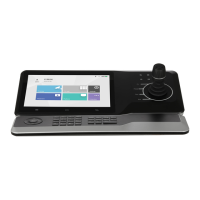It includes multi-address, fault tolerance and load balance.
Multi-address: two Ethernet cards are used independently. During
network status detection, if one Ethernet card is disconnected,
network is deemed to be disconnected.
Fault tolerance: two Ethernet cards use one IP address. Only one
Ethernet card works under normal conditions; if the working
Ethernet card breaks down, the other Ethernet card starts to work
automatically, so as to ensure smooth network. During network
status detection, network is deemed to be disconnected only
when both Ethernet cards are disconnected. Both Ethernet cards
shall be in the same LAN.
Load balance: two Ethernet cards use one IP address and work
together to undertake network load. Their network throughput is
basically the same. If one breaks down, the other one still works
normally. During network status detection, network is deemed to
be disconnected only when both Ethernet cards are
disconnected. Both Ethernet cards shall be in the same LAN.
When “Net Mode” is set to be “Fault Tolerance” or “Load Balance” and
multiple Ethernet cards are bonded, one Ethernet card can be
designated to be default working Ethernet card.
It is usually default value.
It is IPv4 address format by default, which shall not be modified.
Enter numbers to modify IP address, set corresponding “Subnet
Mask” and “Gateway”. Default IP address of Internet keyboard is
“192.168.1.108”.
IP address of DNS server.
IP address of alternate DNS server.
Table 3-3
Step 3 Click “Save”.
3.4.2 Wi-Fi
Automatic Search for Wi-Fi
Click to enable WI-FI function. The system will search Wi-Fi automatically and display
results as shown in Figure 3-4. Click to update the search.

